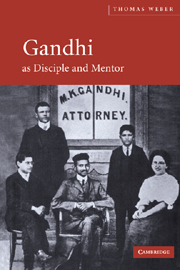Preface
Published online by Cambridge University Press: 22 September 2009
Summary
In a sense this whole project started when I was researching Gandhi's Salt March to Dandi in the early 1980s. I worked in the library of the Sabarmati Ashram for many weeks and walked the ashram grounds daily. While there, a significant question arose for me: how could Gandhi have left this utopia – or at least a place that must have been a rural utopia in 1930 rather than the small oasis surrounded by a very noisy and dirty urban sprawl it is now – vowing (in effect) never to return? Simplistic explanations of sacrificing his home on the altar of the national cause were not totally satisfying. I completed my Salt March work and went on to look at other aspects of Gandhi's nonviolence, but the question never really went away.
In 1996, when, for a short time, I was at the Peace Research Institute in Oslo (PRIO), I had the good fortune of getting to know Arne Næss. I had long admired his Gandhi-related writings and we had lengthy talks on matters Gandhi. When he stayed with us in Australia the following year, I realised how deeply he was influenced by Gandhi. After reading some of his writings on deep ecology, although the issue was not often commented on, and certainly not in any detail, it became obvious to me how much that work also owed to the Mahatma.
- Type
- Chapter
- Information
- Gandhi as Disciple and Mentor , pp. vii - xiPublisher: Cambridge University PressPrint publication year: 2004



